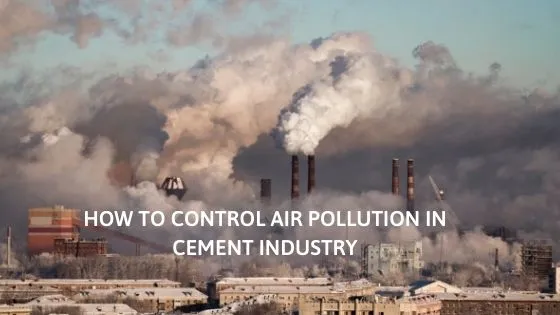Air pollution becomes a big headache for the environmentalists all over the world. In a developing country like India, the matter is still not under control. With the advancement in various industries, the need for air pollution control becomes much critical than ever. The cement industry is one such industry where the procedure of air pollution control is strictly maintained.

There are a lot of ways to control air pollution in the cement industry. If you are the owner or the production manager in a cement company, then you must be aware of the ways of controlling air pollution level at your site.
Know about the Devices
With the advent of modern technologies, there are new devices in the market that can help you in controlling air pollution in cement factories. Before you decide one of these devices, you should have a basic knowledge about the devices available in the market.
ESP or Electrostatic Precipitator
ESP control device is used to ionize the polluted air passing between the electrodes. You can see the use of this device in cement mills and roller mills to reduce the emission of products like cement kiln dust which is highly responsible for making the air contaminated.
Baghouse Filters
Bags are used to filter the polluted air in the cement factories and other mills. Contaminated air is filtered through these bags, which are closed at the bottom. The top of the bag is open to an air chamber which remains clean and pollution-free. You can see the use of these baghouse filters in cement production mills. Objects collected in the bags are simply released back to the production process of cement to avoid air pollution.

In-Situ Monitoring Device
This monitoring device is used to monitor the emission of SO2, NOx, and hydrocarbon during the procedure of cement making in factories. The record then will be sent to the control room where the controller will check it and then adjust the temperature or the flow of the objects used in the manufacturing process to reduce the emission and keep it under control. The monitor is installed near the cement kiln stack.
Selective Non-catalytic Reduction
This device helps you to check the current emission of SO2, NOx and HCs. The emission can be controlled once the reading is correct. You can prevent the formation of NOx in the cement kiln when you utilize this system regularly in your cement mill.
Nothing is more important than the health of your staffs and workers. Thus, being the owner or a manager of a cement mill, you should know the right use of all these devices to reduce the air pollution level. There are top companies in India that manufacture such filters to control air pollution in cement factories.
Helios Infrapro is one such company. You can get the most advanced bag filters and other devices from https://www.heliosinfrapro.com/products.php at competitive prices. Please contact us 033 24005552 for details.